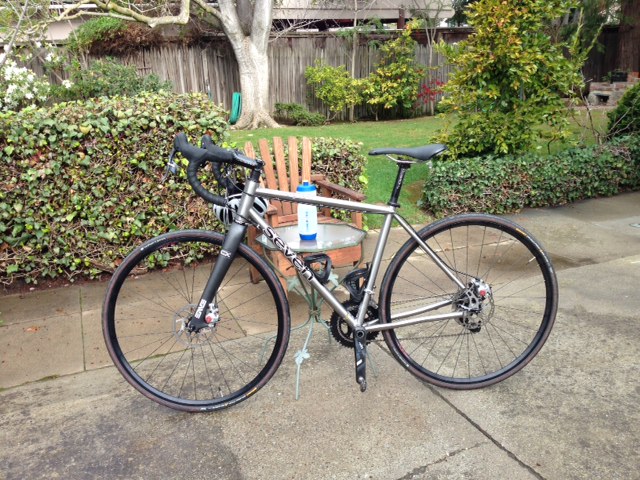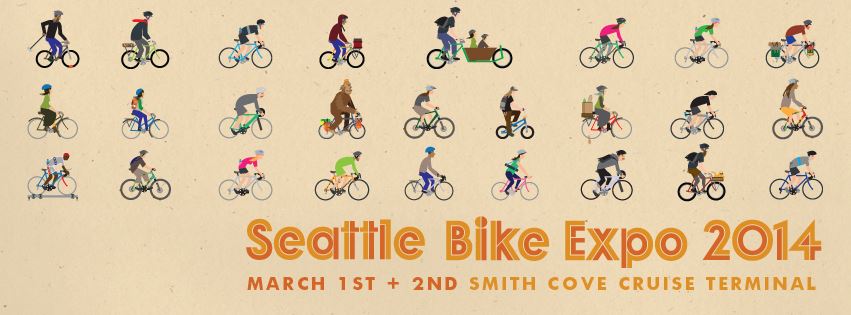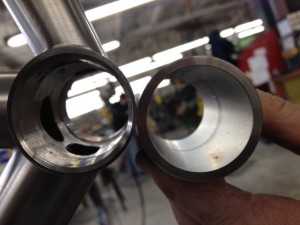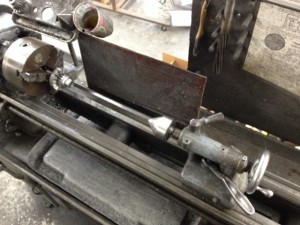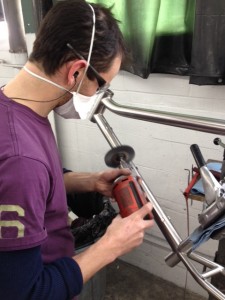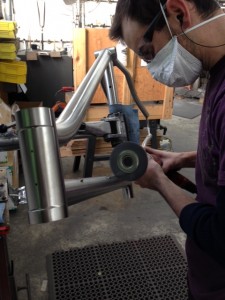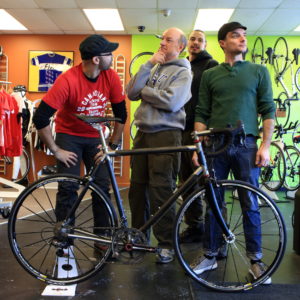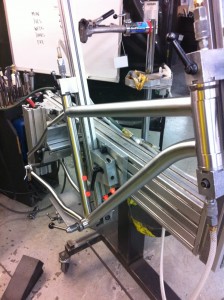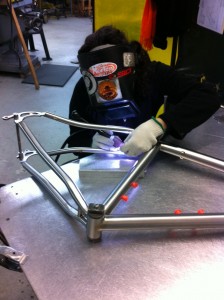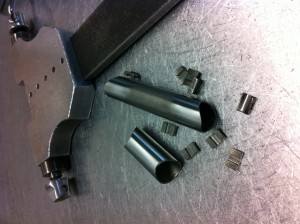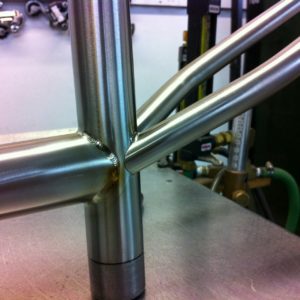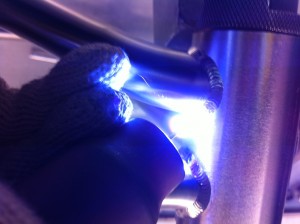Rob Vandermark to present at the Seattle Bike Expo
The 26th annual Seattle Bike Expo is rolling through the Pacific Northwest this weekend, and bringing with it over 175 other vendors, a huge array of bikes, bike related art, and a few guest speakers. One of those guest speakers is our very own Rob Vandermark! Rob will present an interactive session at 12:30 PM on Saturday March 1st :
“Customizing Beyond Fit”
This interactive session will break down the aspects of custom bike building that go beyond the geometry of the bike, explaining how deep personalization of the riding experience can have value for any and every rider. Understanding the bike in this way will help riders evaluate their riding needs more clearly and clarify priorities as they dream of their next bike.
We keep Rob pretty busy here at home, so this is a rare chance to get see him out in the wild. If you are in the area, stop by and say hello, or better yet, participate in the discussion!
Cascade Bicycle Studio, one of our top authorized Seven retailers, will have a booth decked out with a variety of Sevens and other not to be missed bike paraphernalia, be sure to check out their display as well.
The Finisher’s Dance
Gritty Nylox bristles whip over the titanium tube and brush off the discoloration left behind from welding. The sound isn’t deafening, but with three other frames being wheeled at the same time, it is pretty loud this afternoon. The final stage, before frames get wrapped up and shipped out, or in my case handed off, is my favorite to watch. Unlike a welder, whose hands move slowly and steadily, frame builders move about like dancers. Twirling around the stand as they flip, twist, and rotate the bike, their performance looks choreographed. Dan C. is working on my bike, but his recital isn’t a dance at all, in fact it’s one of the most arduous parts of fabrication. We call it “FINISHING.”
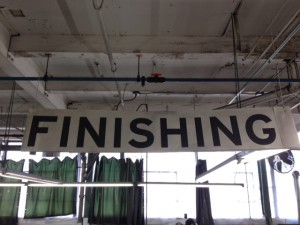
Before I caught up to him, Dan had already run my frame through the CNC machine where the bottom bracket was threaded, faced, and chamfered. In machining, the bottom bracket starts as a thick walled, round tube. When the down tube, seat tube, and chain stays are all welded on to it, the heat distorts the metal, microscopically, but enough that it’s no longer perfectly round. The thick tube wall is important because our CNC machine will bore through it, expanding the inner diameter to leave a perfectly round hole, which it can then thread. You can see the difference in wall thickness.
Dan had also faced and reamed the 44mm head tube so my Chris King InSet 7 headset will press in evenly. As an aside, the lathe that faces and reams head tubes is my favorite machine in the building. Who knows what it did before it came to Seven, but it looks old and tank like. I bet it weighs several tons. Head tube after head tube, it keeps working, just like new. Spin the crank and it goes round and round like a Record square taper bottom bracket. So cool.
When those two steps were finished, Dan bonded in the seat tube insert, cut the seat top binder notch, and checked the frame’s alignment, making improvements where necessary.
By the time I got back to see how it was coming along, my bike was half way through the wheeling process.
Once the main tubes have been wheeled, and the natural sheen of titanium comes through, he’ll exchange his drill for a ruddy strip of Scotch-Brite. The Scotch-Brite pad gives a uniform finish to the frame that can be replicated at home, at the end of the season, or whenever I want it to look like new.
When the frame passes Dan’s final, grueling, inspection, he’ll attach all of the small parts. The last step is to wipe down the frame with a light furniture polish.
Pretty soon my frame will be ready to build, and I will be bouncing off the walls.
John S’s 622 SLX
Behind the Mask
Nestled snug in their box, the tubes that will become my frame roll, with the jig, from machining to welding, where they wait to be claimed. Who welds each frame is a matter of chance. Whichever welder is available at the moment takes the next frame in line. In my case, that welder is Stef Adams. Coincidentally, Stef welded my other Seven back in 2005, an Elium SL, and she did such a good job with that one that my thirst for a new bike was stifled for nearly a decade.
While in the machining stage, tubes get coated with grease, dust, shavings, “permanent”marker, finger prints, oil, and who knows what else. To ensure that her welds will last a lifetime, Stef cleans each tube in a two stage acetone bath which wipes away everything, including the boastful claims of the marker. By wearing fresh, cotton gloves she keeps her own finger prints off the tubes in the process.
Sevens are TIG welded (the acronym stands for Tungsten Inert Gas). We pump argon through our frame jigs and into the tube sets as we weld them. The inert argon won’t react with the molten titanium, which is why we use it to “clean” the inside and outside of each area to be welded.
Stef assembles the clean tubes back into the jig, then hooks up a gasket to the head tube in order to create the back purge, plugging all of the external holes in the frame (e.g. where water bottles will be mounted) with stoppers. Internal breather holes, previously drilled into the tubes, will allow the gas to flow from one tube to the next until all of the tubes are overflowing with argon. Argon also flows out of the welder’s torch which protects the outside of the tubes.
A gauge at each welding station lets the welders know when there is enough argon in the frame to begin welding. Stef checks the gauge and begins tacking one tube to the next. A tack is a small spot weld that holds the tubes in place. They make freehand welding more manageable.
Out of the jig and onto the welding table the tacked frame goes. Stef works in a most graceful fashion, twirling the frame around the table, welding a little here, a little there, with the smooth, precise movements that she has perfected over the course of more than seven thousand frames.
Little by little, the frame gets closer to completion. Stef says it takes a few hours to weld a frame as “simple” as mine, but that couplers and other options can add to that. My frame is simple in that it is a straight forward mountain bike, with no additional features or options that need to be welded on. I clarify with her that it is also awesome, and she agrees.
Below are the bridges and zip tie guides. Not too many, means not too complicated.
Perfectly round, overlapping droplets of molten titanium bond the tubes together. A stack of dimes, fish scales, whatever you want to call them, they will hold the frame together for the rest of its life. I think they are beautiful. One of the many artistic achievements of the welder is to make it appear that the weld was done all at once, one droplet after the next, until the entire tube is welded, but in reality, they work in tiny centimeter long increments, which is why the frame is flipped, spun, and maneuvered into different positions as they go.
For a novice, welding can be pretty scary. There is electricity, intense heat, and a light so bright it could blind you. Behind a camera lens, it looks like a brilliant purple and blue light.
But from behind the welder’s mask, it’s actually quite pleasing. The welding mask is tinted so dark that, to Stef, it feels like welding by candle light. She works slowly but steadily. Aiming the torch with her right hand, she increases the heat until it’s so hot that the spindly titanium bead in her left hand melts when she dabs it on the tube. Each droplet adds material and strength to the weld. This style of welding bikes is called the Puddle Bead Method, and was pioneered by another welder at Seven, Tim Delaney. Stef is a master, and does a great job of explaining what she is doing while she works. She makes it look so easy, but I know that if I were at the helm, there would be shouting, catastrophe, and probably a fire.
A job well done and a small token of appreciation.
The next time I check on it, the frame is all together and hanging up in the final machining department, ready for the next steps, so close to completion.

